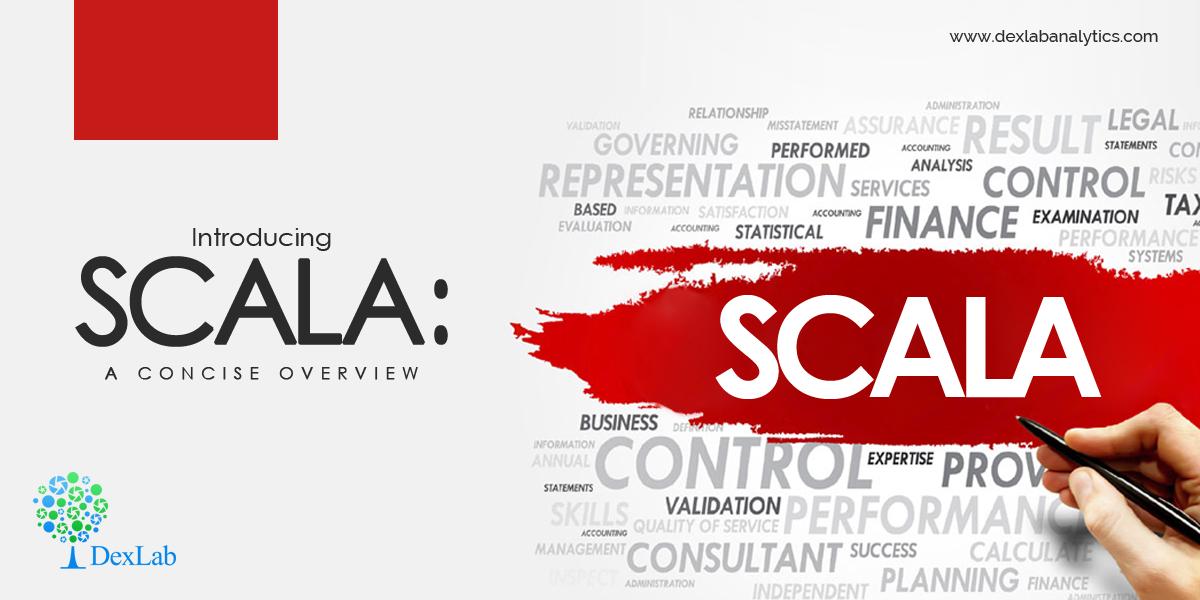
Developed on Java Virtual Machine, Scala is a remarkable, advanced programming language finding acceptance amongst a fueling developer’s community worldwide. It functions parallel to Java. It has a lot of differences as well as similarities with the Java programming language. Its source code is compiled and exhibits functional programming.
The scope and capabilities of Scala are versatile. From writing web applications to parallel batch processing and data analysis, Scala can be leveraged for a plethora of high-end purposes. But, before going into such nuances, we would advise you to take a brief look at the below-mentioned questions with answers: they will help you grasp the intricacies of Scala and grab the hottest job in town.
Explain Scala?
Scala is a fantastic concoction of object-oriented and functional programming. Together, it combines to construct a cutting-edge programming language that is highly scalable, hence the name ‘Scala’.
Highlight the advantages of using Scala.
- Swearing allegiance to its name, Scala is a highly scalable language – supported by maintainability, testability and productivity features – which it makes it an obvious choice over its tailing rivals.
- Companion and Singleton objects in Scala offers an improvised solution in contrary to other static in other JVM languages, including Java.
- It has the striking ability to eliminate the need to possess a ternary operator.
Looking for best Scala training Delhi? DexLab Analytics is the answer!
Define a Scala Map.
Scala Map is a cluster of key-value pairs, wherein the values can easily be retrieved using the keys. In the map, the values are not unique but the keys are.
Scala supports two types of maps, namely immutable and mutable. By default, Scala endorses immutable map, but no worries, if you want to leverage mutable map, you need to import scala.collection.mutable.Map class, explicitly.
Name the Scala library ideal for functional programming.
Best suited, Scalaz library is hailed perfect for functional programming. Equipped with functional data structures complementing quintessential Scala library parameters, it hosts a healthy stream of pre-determined foundational type classes, including Functor, Monad, etc.
Highlight the difference between ‘Unit’ and ‘()’ in Scala.
Unit is a subset of scala.anyval, which is just a replica of Java void offering Scala with an abstraction of the Java platform. On the other hand, empty tuple, represented as () in Scala defined as a unit value.
What distinguishes concurrency from parallelism?
Most of the laymen confuse the terms concurrency and parallelism. To clear it up, concurrency is a phenomenon when numerous computations perform sequentially at overlapping time periods, while parallelism refers to when processes occur simultaneously. Futures, Parallel collection and Async library are a few examples when parallelism is achieved in Scala.
Define Monad in Scala.
The best way to explain a monad would be by comparing it with a wrapper: just how you wrap a present with a shiny wrapping paper finished with ribbons to make it look attractive, Monad in Scala is used to wrap class objects and fulfill two significant tasks:
- Determine through ‘unit’ in Scala
- Bind through ‘flatmap’ in Scala
Why do you use Scala’s App?
The App is a trait reflected in Scala package termed as ‘scala.App’, and it determines the main method. When a class or an object goes beyond this trait, they automatically become Scala executable programs, because they acquire the main method directly from the application. No one needs to write the main method when using the App.
Now ready for Scala certification Training Gurgaon? For more information, reach us at DexLab Analytics.
Interested in a career in Data Analyst?
To learn more about Data Analyst with Advanced excel course – Enrol Now.
To learn more about Data Analyst with R Course – Enrol Now.
To learn more about Big Data Course – Enrol Now.To learn more about Machine Learning Using Python and Spark – Enrol Now.
To learn more about Data Analyst with SAS Course – Enrol Now.
To learn more about Data Analyst with Apache Spark Course – Enrol Now.
To learn more about Data Analyst with Market Risk Analytics and Modelling Course – Enrol Now.

Comments are closed here.